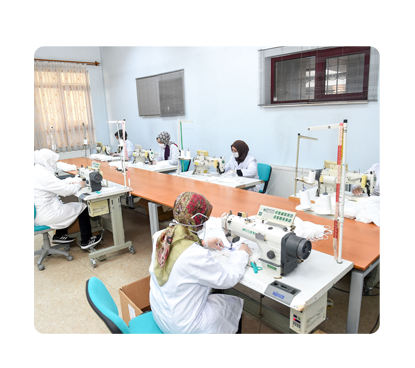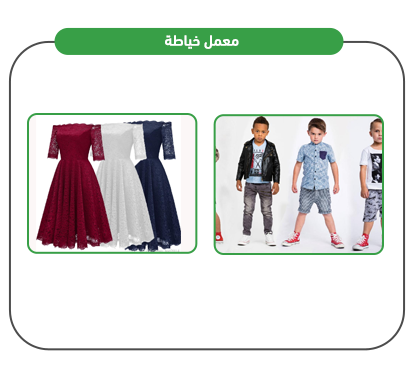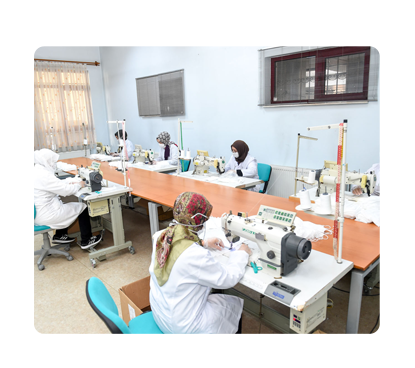It is a sewing factory where the factory produces and sews women’s and children’s clothing, in addition to special clothing (private and government school aprons, official uniforms in companies and factories).

It is the establishment of a sewing factory where the factory produces and sews women’s clothes and children’s clothes, in addition to special costumes (bibs of private and government schools, uniforms in companies and factories).<The importance of the project comes as a result of the prosperity of the ready-to-wear trade due to the increase in population and the development of the standard of living. This leads to people buying a lot of ready-to-wear clothes continuously, which brings a lot of profits to the ready-to-wear trade. The factory targets all segments of society from men, women and children, as well as formal and medical clothes are provided for female employees of banks, companies, receptionists, businesswomen and university professors, and most of the products in the factory are characterized by high quality and competitive price.



Contribute to meeting part of the growing demand for clothing.
Create new investment opportunities with good returns.
Achieve a good return for the project owner.
Employ the workforce and improve their economic and social standing.
Achieve good returns, cash flows, and added economic value.
Optimize the use of the project’s resources and assets.
Achieve a high level of quality.
Maintain competitive prices that enable the project to achieve its target share.
Use the latest available sewing machines.
Executive summary
Study project services/products
Market Size Analysis
Risk Assessment
Technical study
Financial study
Organizational and administrative study

Service sector in GCC countries
According to the macroeconomic theory of sectors, the economy is divided into three main and large sectors: the first; – is the sector that is based on collecting raw materials and includes mining companies, timber companies, oil exploration companies, in addition to agricultural and fishing industries. The second sector; is the sector that depends on goods and their sale, such as: (car manufacturing, furniture, clothing trade… etc.). As for the third sector, known as the “services” sector; it is the sector responsible for providing and producing services, essentially relying on intangible things, such as: entertainment, health care, transportation, hospitality, restaurants, etc. This theory believes that the more advanced countries are, the more their economies are based on the third sector, unlike primitive countries, which rely mostly on the first sector (the United States of America, for example, the service sector constitutes 85% of its economy).
Kingdom of Saudi Arabia:
The State of Qatar:
Kuwait:
United Arab Emirates:
Sultanate of Oman:
Global Service Sector
The service sector is the major contributor to the world’s gross product; It alone accounts for more than three fifths of this output. The sector does not rely on the production of tangible goods such as automobile and furniture, but rather on the provision of intangible services such as banking, medical care, transportation, hospitality, leisure, etc. The value of the sector market was estimated in 2020 at USD 10,814.49 billion and rose to USD 11,780.11 billion in 2021. The market achieved a CAGR of 8.9%. After recovering from the effects of the coronavirus pandemic, global market experts expect the sector’s market to reach US $ 15683.84 billion by 2025, bringing the market to a CAGR of 7% in the coming years.
